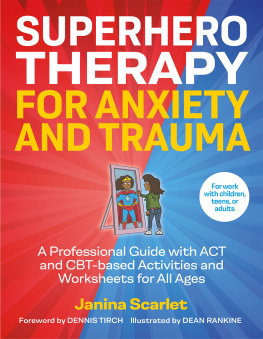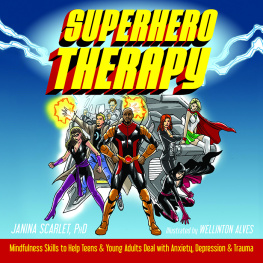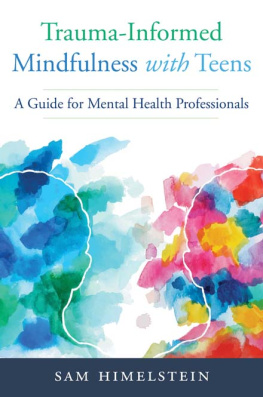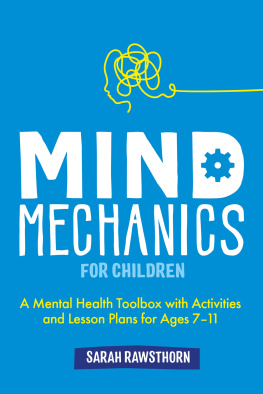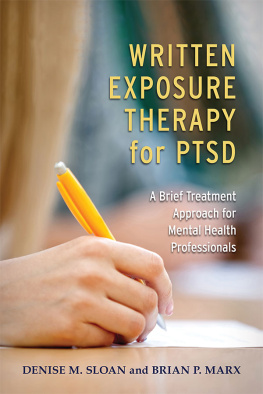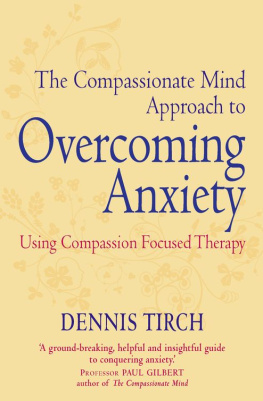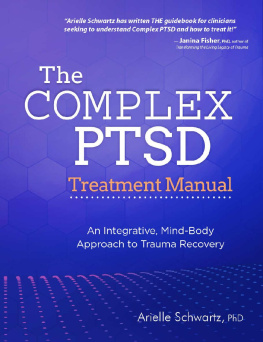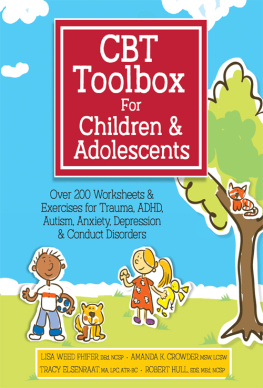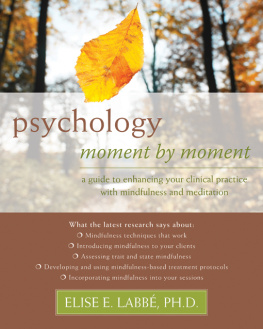Contents
Page list

of related interest
Creative Ways to Help Children Manage Anxiety
Ideas and Activities for Working Therapeutically with Worried Children and Their Families
Dr. Fiona Zandt and Dr. Suzanne Barrett
Illustrated by Richy K. Chandler
Foreword by Dr. Karen Cassiday
ISBN 978 1 78775 094 4
eISBN 978 1 78775 095 1
The Creative Toolkit for Working with Grief and Bereavement
A Practitioners Guide with Activities and Worksheets
Claudia Coenen
Illustrated by Masha Pimas
ISBN 978 1 78775 126 0
eISBN 978 1 78775 147 7
Creative Coping Skills for Teens and Tweens
Activities for Self Care and Emotional Support including Art, Yoga, and Mindfulness
Bonnie Thomas
ISBN 978 1 78592 814 7
eISBN 978 1 78450 888 3
Hell Yeah Self-Care!
A Trauma-Informed Workbook
Alex Iantaffi and Meg-John Barker
ISBN 978 1 78775 245 0
eISBN 978 1 78775 246 7
The CBT Art Workbook for Coping with Anxiety
Jennifer Guest
ISBN 978 1 78775 012 8
eISBN 978 1 78775 013 5
SUPERHERO
THERAPY
FOR ANXIETY
AND TRAUMA
A Professional Guide with ACT
and CBT-based Activities and
Worksheets for All Ages
Janina Scarlet
Foreword by Dennis Tirch
Illustrated by Dean Rankine

First published in Great Britain in 2021 by Jessica Kingsley Publishers
An Hachette Company
Copyright Janina Scarlet 2021
Foreword copyright Dennis Tirch 2021
Front cover image source: Dean Rankine
All rights reserved. No part of this publication may be reproduced, stored in a retrieval system, or transmitted, in any form or by any means without the prior written permission of the publisher, nor be otherwise circulated in any form of binding or cover other than that in which it is published and without a similar condition being imposed on the subsequent purchaser.
A CIP catalogue record for this title is available from the British Library and the Library of Congress
ISBN 978 1 78775 554 3
eISBN 978 1 78775 555 0
Jessica Kingsley Publishers policy is to use papers that are natural, renewable and recyclable products and made from wood grown in sustainable forests. The logging and manufacturing processes are expected to conform to the environmental regulations of the country of origin.
Jessica Kingsley Publishers
Carmelite House
50 Victoria Embankment
London EC4Y 0DZ
www.jkp.com
Contents
List of Activities
Acknowledgments
This work would not have been possible without the constant support of my incredible partner, Dustin. Thank you, honey, for all the hugs, for believing in me, and for bringing me coffee at all hours of the day to help my writing. This book would also not be possible without my amazing editor, Jane Evans, whose kind guidance has allowed me to put this work together. I would also like to thank the amazing Dean Rankine for his gorgeous artwork.
Finally, I would like to express my deepest gratitude to everyone who supported me through this process, especially my familyDustin, Hunter, Eddie, Shaye, Sherry, Rich, Chase, my mom, and my incredible friendsPaxton, Sasha, Shawn, Phil, Jenna, Eugene, Robin, Elina, Alan, and Happy. Andrew McAleer, thank you for always believing in me.
Thank you all for being wonderful.
Foreword
In the age of evidence-based psychotherapy, how do we put Dr. Janina Scarlets work in context? Even if you are a psychologist who appreciates geek culture, and I am told there are a few of us, the idea of a therapy using superheroes as a central idea could give you pause. Psychotherapy deals with human psychological suffering, coming to terms with experiences such as grief, suicidal thoughts, and life after enduring trauma. What could something as seemingly superficial as superhero lore have to do with such serious matters? As it turns out, there is something potentially liberating in how you relate to symbols of empowerment, compassion, and strength, and Dr. Scarlet has found a key to understanding how to harness this power. By utilizing the metaphor of the heros journey, and drawing upon archetypes woven into contemporary popular culture, Dr. Scarlet has realized a vision for emotional healing that is at once ancient and post-modern.
Dr. Scarlets Superhero Therapy does not begin and end in working with symbols and archetypes, however. Wisely, Dr. Scarlet has integrated evidence-based processes and procedures into her approach to psychotherapy, so that her methodology can stand on the shoulders of giants. A range of cognitive and behavioral therapies, with a proven track record in treating anxiety and mood disorders, provide the raw material for Superhero Therapy. Acceptance and commitment therapy (ACT), in particular, forms a solid foundation for much of the work in this book. Beyond integrating psychotherapy techniques, Dr. Scarlet has forged these ideas and methods into something new, even something beautiful. She has given you an archetypal quest item, the sword or grail, if you will, and you, the reader of this book, are challenged to accept the call, and to bring this method into those dark psychological spaces where heroic efforts at alleviating human suffering are needed most.
Some of the most ancient known rituals concerning human emotion and personal transformation, such as the mystery rites of Osiris, Attis, Mithras, and Dionysus from thousands of years ago in Central Asia and North Africa, involve a person shifting their state of consciousness to identify with an archetypal and heroic god-form. In the centuries to follow, global wisdom traditions would use symbolic characters in heroic quests as teaching tools to guide people to greater wisdom and personal realization, from the travails of Hanuman and Ram in the Ramayana to the tales of the saints of Eastern Orthodox Christianity. From shamanic rites using entheogenic chemicals, to Tibetan esoteric Buddhist visualizations to Sufi chanting or engagement with the devic intelligences elaborated in the Kaballah, archetypal and mythopoetic identification is one of the most consistent and profound techniques we find for emotional growth, across time and cultures. In the world of psychotherapy, the visualization methods we use in compassion-focused therapy (CFT; Gilbert, 2010), self-as-process techniques in ACT, role-playing techniques in experiential therapies, and, of course, Jungian work with archetypes, all draw upon the self-same processes that are the lifeblood of Superhero Therapy.
In secular and capitalist cultures, our access to the evolved, prototypic dimensions of self that myths and archetypes provide can seem elusive. The genius of Dr. Scarlets work is the way that she finds access to archetypal intelligences hidden in plain sight. By using the metaphors and symbols of superheroes, and the vernacular of popular culture, Dr. Scarlet allows you to leverage deeply embodied social mentalities that have been designed by evolution to serve specific functions. Our protective self, our nurturing self, even our playful self, all become available to us in this way, and we can stimulate the attendant neurobehavioral repertoires that we need to engage with suffering, as we take up the mantle of the hero, the superhero, and practice becoming the version of ourselves that is our hearts deepest wish for what we want to see in the world.
What do superheroes have to do with therapy? Explore your own origin story, identify the latent power that is arising in your heart and mind, face your own shadows and demons, and you may find a surprisingly satisfying answer to this question.

